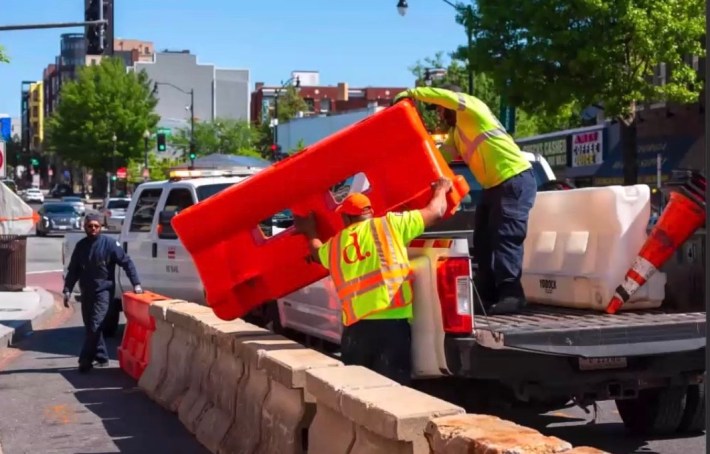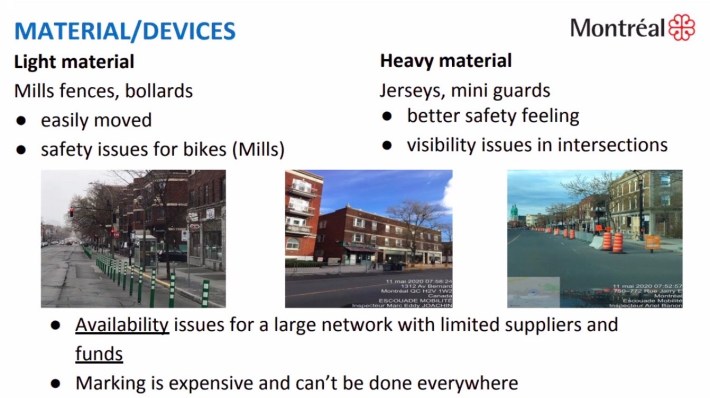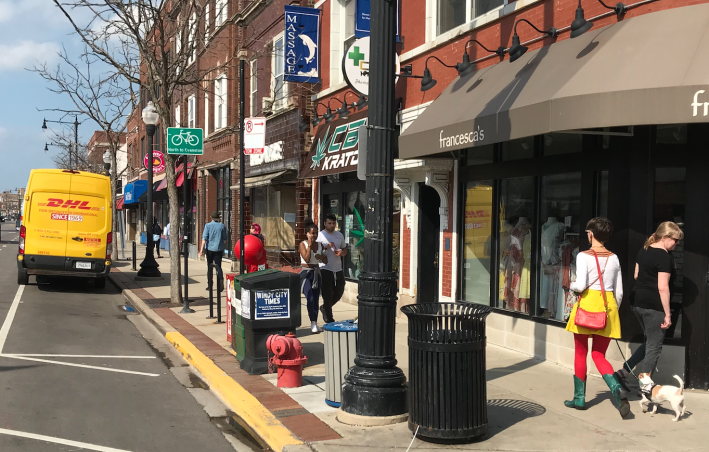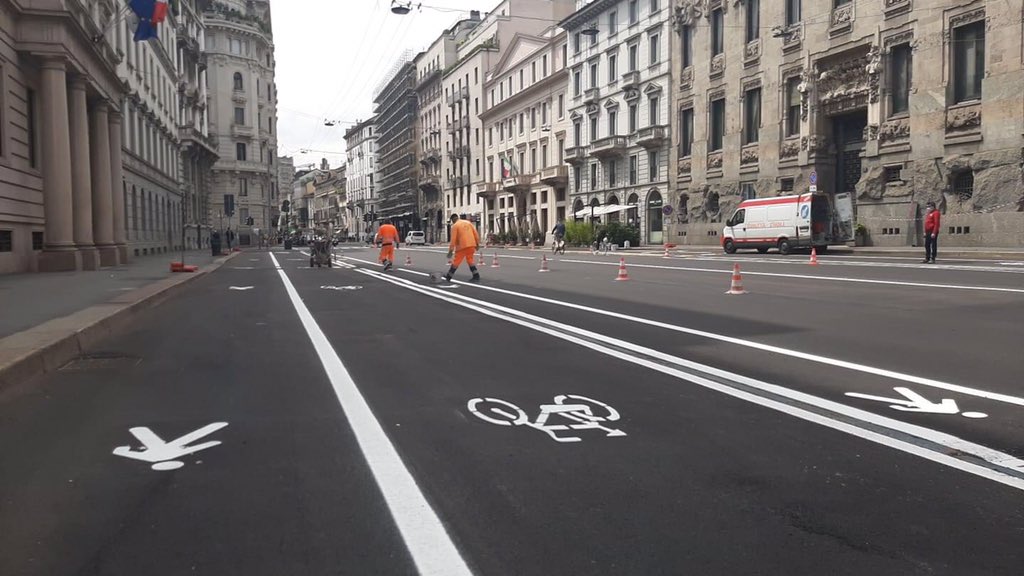The National Association of City Transportation Officials recently held a talk on cities' response to the current surge in walking and biking during COVID-19. The webinar, “Essential Movement: Building Temporary Bicycle and Pedestrian Facilities” featured speakers from Montreal, Milan, and Washington D.C.
Many cities across the world are expanding sidewalks to facilitate safe walking and waiting, rapidly building bike facilities to ease demand on transit, and expanding transit capacity where it's needed most. While we wait for the city of Chicago to hopefully open up streets for safe, socially-distanced transportation and recreation, we can look at what other cities are doing.
Linda Bailey, the director of Washington, D.C.’s Vision Zero program through the District Department of Transportation, kicked things off by sharing the work being done to expand sidewalks and create more space for biking and walking in the nation's capital. In mid April the District opened up three parkways to walking, biking, jogging, and scooter riding. In late April D.C. expanded sidewalks near grocery stores and other essential retailers.

Bailey said her city was able to quickly make changes given that DDOT springtime is typically the start of the department's construction season. The city recently created the Reopen DC Advisory Committee which is guiding the next phase of the District’s response to COVID-19. Bailey hopes this committee will create new opportunities to make more space for essential travel on foot and by bike, as well as recreation.
Valerie Gagnon, mobility director of Montreal's Department of Urban Planning and Mobility shared that city's efforts to create more space for social distancing. Initially the city expanded sidewalks (with the new space dubbed “sanitary corridors”) and created a small network of Slow Streets where through traffic is prohibited and pedestrian activity is allowed in the roadway.
“Sanitary Corridors” were selected based on population density, shopping and commercial or office building density, school and daycare proximity, and previous data regarding pedestrian and cyclist volumes. An impressive 98 miles of safety corridors were created in less than a month. Inspectors visit the sites daily to monitor how the changes are working and to look out for safety hazards. Starting in June, 37 miles of bikeways and 27 miles of pedestrian paths will be created. July will bring an expansion to these paths but no exact number was given.

The final presenter was Demetrio Scopelliti from Milan. He works as an advisor to the deputy mayor for urban planning. Before COVID-19 arrived in Milan, the city had approved a sustainable mobility plan called Milano 2030 which has a focus on sustainable urban mobility, air quality improvement, and reducing transportation emissions. Planners had to switch gears to respond to short-term mobility needs.
Milan’s mobility response to COVID-19 is quite impressive. The city has created slow speed zones and short-term parking for delivery and emergency vehicles; expanded the bike network; and did tactical urbanism treatments to create more public space and mobility as a service solutions. Milan also lowered the number of passengers allowed on public transportation by 30 percent to reduce the risk of transmission and respond to falling demand. Scopelliti noted that the city was able to do this by identifying light, cost-effective, fast, and reversible solutions.
During the Q & A, an audience member asked about the possibility of some of these changes becoming permanent. Gagnon from Montreal responded that it's possible some of the new bike lanes in her city will become permanent. She noted that, due to the reduced car traffic and the need for socially-distanced transportation options, many merchants have been more open to bike lanes than they were in the past.
It's not uncommon for business owners in Chicago to oppose bike lanes and, given the rough economic environment, there may be even more fears around converting parking lanes to pedestrian, bike, or cafe space being bad for business, even though parking demand is currently way down. I think there's an opportunity for the Chicago Department of Transportation to make the economic case for bike lanes and show merchants data that bike lanes and expanded sidewalks in other cities have actually improve retail sales.

I think of the lovely strip of Clark Street in Andersonville. In the summer the narrow sidewalks are full of people and the businesses benefit from all the foot traffic. I'm sure that if the sidewalk was expanded merchants would see even more sales. During the pandemic I'm not visiting the area as much as I normally do because, in addition to non-essential businesses being closed, the sidewalks feel crowded during the pandemic, and it's challenging to stay six feet away from other pedestrians. If one of the (currently nearly empty) parking lanes was turned into pedestrian space, I'm sure that would change.
Sadly there wasn't much of a substantive answer given when someone asked how cities are gathering input on these changes. Oxfam International created a Guide to Community Engagement during COVID-19 that could be useful for folks.





